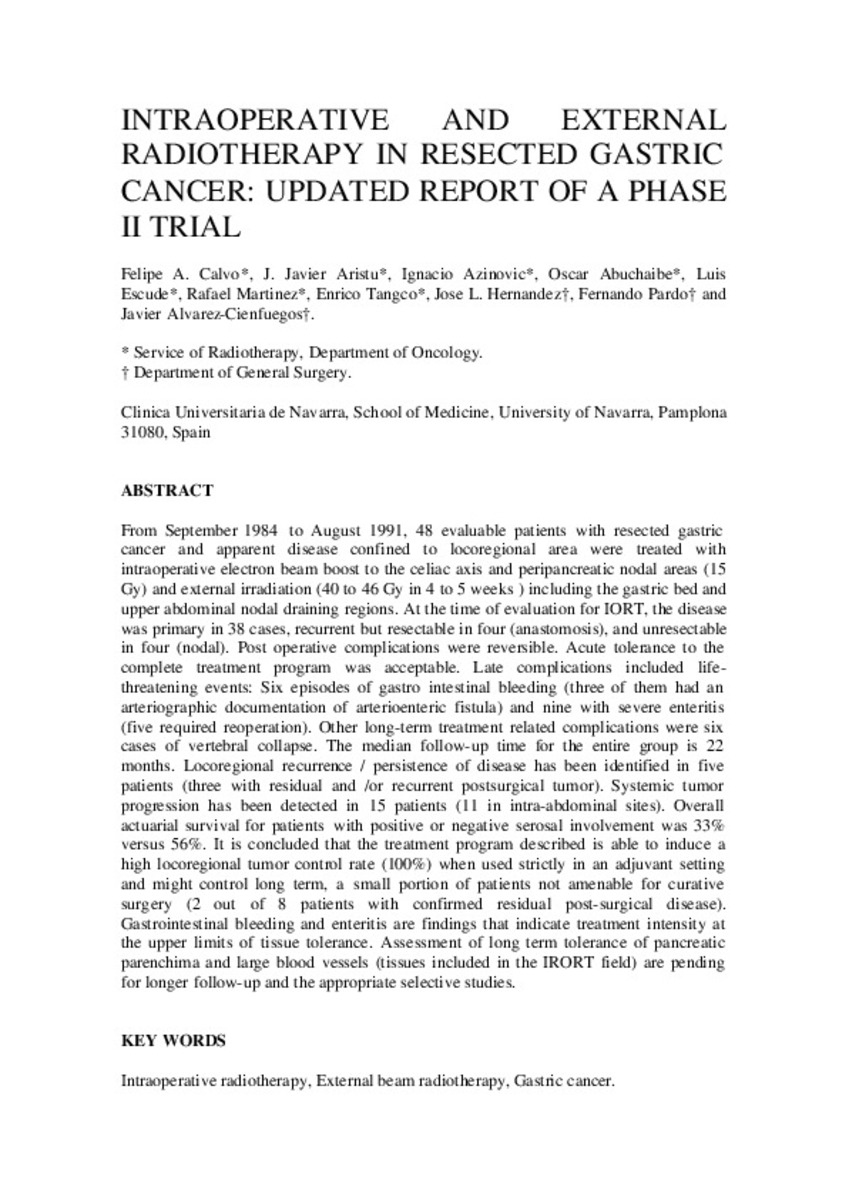Intraoperative and external radiotherapy in resected gastric cancer: updated report of a phase II trial
Palabras clave :
Intraoperative Care
Postoperative Complications
Stomach Neoplasms/mortality
Fecha de publicación :
1992
Cita:
Calvo FA, Aristu JJ, Azinovic I, Abuchaibe O, Escude L, Martinez R et al . Intraoperative and external radiotherapy in resected gastric cancer: updated report of a phase II trial. Int J Radiat Oncol Biol Phys. 1992;24(4):729-36.
Aparece en las colecciones:
Estadísticas e impacto
0 citas en

0 citas en

Los ítems de Dadun están protegidos por copyright, con todos los derechos reservados, a menos que se indique lo contrario.










